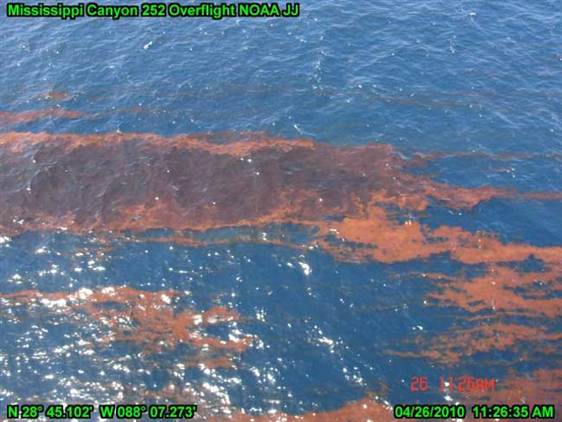Synergistic toxicity of Macondo crude oil and dispersant Corexit 9500A® to the Brachionus plicatilis species complex (Rotifera)
Abstract
Using the marine rotifer Brachionus plicatilis acute toxicity tests, we estimated the toxicity of Corexit 9500A®, propylene glycol, and Macondo oil. Ratios of 1:10, 1:50 and 1:130 for Corexit 9500A®:Macondo oil mixture represent: maximum exposure concentrations, recommended ratios for deploying Corexit (1:10–1:50), 1:130 the actual dispersant:oil ratio used in the Deep Water Horizon spill. Corexit 9500A® and oil are similar in their toxicity. However, when Corexit 9500A® and oil are mixed, toxicity to B. manjavacas increases up to 52-fold. Extrapolating these results to the oil released by the Macondo well, suggests underestimation of increased toxicity from Corexit application. We found small differences in sensitivity among species of the B. plicatilis species complex, likely reflecting phylogenetic similarity. Just 2.6% of the water-accommodated fraction of oil inhibited rotifer cyst hatching by 50%, an ecologically significant result because rotifer cyst in sediments are critical resources for the recolonization of populations each Spring.

This photograph shows windrows of emulsified oil (bright orange) sprayed with dispersant. The photo was taken on April 26, 2010 as part of an aerial observation overflight.
Britain banned some formulations of the dispersant Corexit more than a decade ago.
Glad I saved files from my old site. *Note – I have removed the links that were within these old files to other posts because the old site is off line. Everything else is left as is. Here’s one from May 20 2012
BP to use less lethal dispersant, maybe ..
EPA demands less-toxic dispersant
The Environmental Protection Agency informed BP officials late Wednesday that the company has 24 hours to choose a less-toxic form of chemical dispersants to break up its oil spill in the Gulf of Mexico, according to government sources familiar with the decision, and must apply the new form of dispersants within 72 hours of submitting the list of alternatives.
The move is significant, because it suggests federal officials are now concerned that the unprecedented use of chemical dispersants could pose a significant threat to the Gulf of Mexico’s marine life. BP has been using two forms of dispersants, Corexit 9500A and Corexit 9527A, and so far has applied 600,000 gallons on the surface and 55,000 underwater.[ That’s 15595 barrels if measured in terms of oil ]
“Dispersants have never been used in this volume before,” said an administration official who spoke on the condition of anonymity because the decision hasn’t been formally announced. “This is a large amount of dispersants being used, larger amounts than have ever been used, on a pipe that continues to leak oil and that BP is still trying to cap.”
The new policy applies to both surface and undersea application, according to sources, and comes as the EPA has just posted BP’s own results from monitoring the effect that underwater application of chemical dispersants has had in terms of toxicity, dissolved oxygen and effectiveness.
An EPA official said the agency would make an announcement on the matter later Thursday.
Article Link still active as of 5:39 AM 12/1/2012 views.washingtonpost.com
Here’s a video I linked to from June 27 2012
Here’s another saved file from July 23 2010
BP oil spill and the Toxic Air it created
Breathing Toxic Oil Vapors ?
Many of us in the southeast knew this was going to happen. It was inevitable. What else could come from the use of dispersants used to break up the massive oil spill into a micro spill.
For the last 4 days I have had a sore throat. And here I thought I was catching something. Little did I know it was the vapors. ‘Toxic Vapors’.
It started with irritation in the nose and sinus. The feeling in my sinus reminded me of swimming all day in chlorinated water. Do you remember that burning feeling ? I then started to have little chest congestion, then the sore throat. After being outside for a good part of the day yesterday, last night my eyes were bothering me. Burning and itching, like there was sand in them. The feeling reminded me of the effects on the eyes after welding without the protective goggles or helmet, more specifically, the protective lens. I could hardly sleep last night from the irritation to many of my senses and nagging headache.
As of this writing, BP has used 1,072,514 gallons of what they call surface dispersant. This is dispersant sprayed into the air, which then drift down on to the oil slick to break it down. They have also used 771,272 gallons of subsea dispersant. For a total of 1,843,786 gallons of dispersant used at this time. I believe the number to be greater than what is being reported. Why ? Because on July 2, 2010, 64 days into the oil spill they had used a total of 1,620,000 gallons, more or less of toxic dispersant. So … since July 2, 2010 until the latest report retrieved today July 23, 2010, they have only used 223,786 gallons of dispersant in the past 21 days.
I wonder if many people are feeling the way I feel, and are writing it off as something else as I did at the beginning ? I have no proof as to what I have experienced is due to the dispersant. But there is better that 50% that it is. I have also talked to 6 others yesterday. They all mention a sore throat, and two of them mention sinus irritation. And just as in the video, this came about after being out in the rain.
I have many more files during the BP oil spill and videos too. Maybe I’ll get them uploaded one day 🙂
